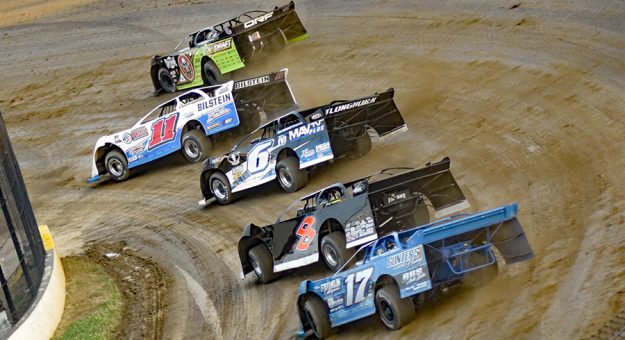MOORESVILLE, N.C. — There is more racing than there has ever been.
There used to be a distinct offseason in which racers would build new cars, take vacations and spend time with their families. Every year that offseason seems to get shorter for the touring professional short-track racer.
Not only during the winter months, traditionally thought of as the offseason, but throughout the year, there are more and more special events and series races available.
Much of this is fueled by the popularity of the sport, and as a result the demand to watch racing on streaming video throughout the calendar year. Streaming video has given fans stuck in cold climates the opportunity to get their racing fix by simply logging on. It’s also provided a revenue stream for tracks, sanctioning bodies and racers.
That’s a good thing.
However, more racing means more parts and more expense. Particularly, in a time when the supply chain is struggling, it will be interesting to see how all the extra events impact the industry.
In December, World Racing Group announced the launch of the Xtreme Outlaw Midget Series and Xtreme Outlaw Sprint (non-winged) Car Series, which gives competitors in the USAC and POWRi midget and sprint car divisions additional opportunities to race for good money.
The USAC AMSOIL National Sprint Car Series has 51 events on its slate, while the USAC NOS Energy Drink Midget Championship boasts 38 races, which is the most for the series in more than 30 years.
In the winged sprint car world, WRG’s World of Outlaws NOS Energy Drink Sprint Car Series has 80 races scheduled, while the All Star Circuit of Champions is planning 56 events. With the Midwest Open Wheel Ass’n, the new POWRi Wing Outlaw Series and the American Sprint Car Series racing in a lot of the same areas, that’s a lot of winged sprint car racing.
The Lucas Oil Late Model Dirt Series has 65 races on its schedule, the World of Outlaws Late Models have the largest schedule in many years and the two are joined by the XRS (20 races) and Flo Night in America (12 events) late model tours that kicked off last year based around live-streamed races.
Regional traveling series for modifieds, late models and sprint cars have also grown their schedules, and new tours have popped up.
As well, all these traveling racers will be competing for bigger purses and larger point funds. The World of Outlaws sprint cars alone are offering a $1 million point fund. All USAC national divisions, the All Stars, the Lucas Oil late models, the WoO late models and Super DIRTcar Series modifieds have all increased point funds.
With more incentive for racers to hit the road, this makes us wonder exactly what it means for weekly race tracks.
Virtually every one of these traveling racers started their careers by racing at a weekly short track. These tracks are an important part of the racing industry, as they build the future stars and fans of the sport. It’s certainly something to watch.
– By now you have surely noticed this double issue of SPEED SPORT and its sister publication — Sprint Car & Midget Magazine. Because of cost increases and shortages associated with the supply-chain crisis, we’ve made the difficult decision to package the two publications as one moving forward.
For more about this transition, flip your magazine and read Turn 3 Media CEO Joe Tripp’s column on page 5 of Sprint Car & Midget.
– What’s the deal with this trend of prominent racers “stepping away from full-time racing?” What does that mean? Generally, the translation is that they do not have a decent ride, so they are admitting they would return to the track if the “right” offer came along.
And that’s generally the same thing that has brought “retired” drivers back to the cockpit throughout the sport’s history.
– Will there ever be a better leader in the motorsports industry than Roger Penske?
Penske’s many candid remarks during the breakfast presentation (moderated by SPEED SPORT’s Ralph Sheheen) that kicked off the PRI Trade Show reminded everyone that the 84-year-old owner of Indianapolis Motor Speedway has a firm understanding of what makes the motorsports industry tick.
He also knows how to get the most out of those who work for him, which no doubt has led to his many successes during more than 50 years in the sport.
